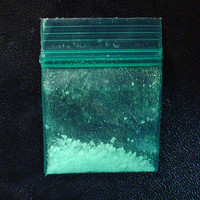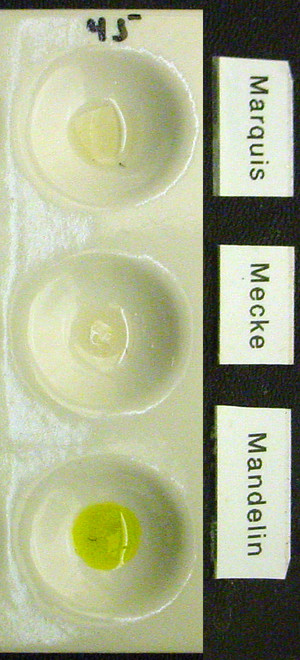New Submissions Are Not Currently Being Accepted
Samples sent after April 10, 2024 will be put on hold.
Viewing desktop version: Switch to Mobile
Ketamine Powder (A - BADS1)
Sold as: Ketamine
ID: 3434
| Test Date: | Jan 12, 2015 |
|---|---|
| Pub. Date: | Jan 12, 2015 |
| Src Location: | San Francisco, CA |
| Submitter Loc: | San Francisco, CA United States |
| Color: | White |
| Size: | 200 mg |
| Data Source: | DrugsData (EcstasyData) |
| Tested by: | DDL |
| Lab's ID: | 20150100045 |
Sold as: Ketamine
Expected to be: Not Specified



Lab did deeper analysis and re-analyzed both ketamine samples from this week and did Selected Ion Monitoring (SIM) and looked at all of the possible bumps in the GC. Nothing obvious.
Current theories include:
1) A mineral or other simple molecule or atom that alters mandelin reaction and overwhelms or blocks the normal ketamine reaction.
2) That a different salt or isomer of ketamine reacts differently than the normal Ketamine HCl that dominates the ketamine market.
We are working to try to narrow down the possibilities. At this point (Jan 22 2015), we are not sure why this sample is showing up green with Mandelin, but all indications are that it is ketamine.
It is possible that the ketamine had a small amount of methylparaben in it that caused the green reaction with the mandelin, but this is not a very satisfactory answer.
As of Feb 10, 2015, we have only one last hope for figuring this out, but we've already spent a lot of time and energy on this question and don't know.
One major argument made by one of the field test team from DanceSafe is that the mandelin reagent ages quickly and does not react as clearly. We don't feel this is an adequate explanation, since the same bottle of mandelin reacted clearly with other ketamine samples on the same day and the color test was re-run several times.
It's a puzzle.